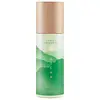What's inside
What's inside
 Key Ingredients
Key Ingredients

No key ingredients
 Benefits
Benefits

 Concerns
Concerns

 Ingredients Side-by-side
Ingredients Side-by-side

Water
Skin ConditioningGlycerin
HumectantPropanediol
SolventDimethicone
EmollientEthyl Oleate
EmollientSqualane
EmollientStearic Acid
CleansingSorbitan Stearate
EmulsifyingParfum
MaskingChamaecyparis Obtusa Water
MaskingCamellia Japonica Seed Oil
EmollientPrunus Persica Leaf Extract
EmollientChamaecyparis Obtusa Wood Oil
MaskingSaccharomyces/Rice Ferment Filtrate
Skin ConditioningCladosiphon Okamuranus Extract
Skin ConditioningCamellia Sinensis Leaf Extract
AntimicrobialHydrogenated Starch Hydrolysate
HumectantSodium Dilauramidoglutamide Lysine
HumectantCarbomer
Emulsion StabilisingTremella Fuciformis Polysaccharide
Emulsion StabilisingCeramide NP
Skin ConditioningStearyl Alcohol
EmollientGlycosyl Trehalose
Emulsion StabilisingBehenyl Alcohol
EmollientPhytosteryl/Octyldodecyl Lauroyl Glutamate
Skin ConditioningXanthan Gum
EmulsifyingPotassium Hydroxide
BufferingAcrylates/C10-30 Alkyl Acrylate Crosspolymer
Emulsion StabilisingButylene Glycol
HumectantTocopherol
AntioxidantCitronellol
PerfumingGeraniol
PerfumingLimonene
PerfumingLinalool
PerfumingEthylhexylglycerin
Skin ConditioningPhenoxyethanol
PreservativeWater, Glycerin, Propanediol, Dimethicone, Ethyl Oleate, Squalane, Stearic Acid, Sorbitan Stearate, Parfum, Chamaecyparis Obtusa Water, Camellia Japonica Seed Oil, Prunus Persica Leaf Extract, Chamaecyparis Obtusa Wood Oil, Saccharomyces/Rice Ferment Filtrate, Cladosiphon Okamuranus Extract, Camellia Sinensis Leaf Extract, Hydrogenated Starch Hydrolysate, Sodium Dilauramidoglutamide Lysine, Carbomer, Tremella Fuciformis Polysaccharide, Ceramide NP, Stearyl Alcohol, Glycosyl Trehalose, Behenyl Alcohol, Phytosteryl/Octyldodecyl Lauroyl Glutamate, Xanthan Gum, Potassium Hydroxide, Acrylates/C10-30 Alkyl Acrylate Crosspolymer, Butylene Glycol, Tocopherol, Citronellol, Geraniol, Limonene, Linalool, Ethylhexylglycerin, Phenoxyethanol
 Reviews
Reviews

Ingredients Explained
These ingredients are found in both products.
Ingredients higher up in an ingredient list are typically present in a larger amount.
Butylene Glycol (or BG) is used within cosmetic products for a few different reasons:
Overall, Butylene Glycol is a safe and well-rounded ingredient that works well with other ingredients.
Though this ingredient works well with most skin types, some people with sensitive skin may experience a reaction such as allergic rashes, closed comedones, or itchiness.
Learn more about Butylene GlycolGlycerin is already naturally found in your skin. It helps moisturize and protect your skin.
A study from 2016 found glycerin to be more effective as a humectant than AHAs and hyaluronic acid.
As a humectant, it helps the skin stay hydrated by pulling moisture to your skin. The low molecular weight of glycerin allows it to pull moisture into the deeper layers of your skin.
Hydrated skin improves your skin barrier; Your skin barrier helps protect against irritants and bacteria.
Glycerin has also been found to have antimicrobial and antiviral properties. Due to these properties, glycerin is often used in wound and burn treatments.
In cosmetics, glycerin is usually derived from plants such as soybean or palm. However, it can also be sourced from animals, such as tallow or animal fat.
This ingredient is organic, colorless, odorless, and non-toxic.
Glycerin is the name for this ingredient in American English. British English uses Glycerol/Glycerine.
Learn more about GlycerinWater. It's the most common cosmetic ingredient of all. You'll usually see it at the top of ingredient lists, meaning that it makes up the largest part of the product.
So why is it so popular? Water most often acts as a solvent - this means that it helps dissolve other ingredients into the formulation.
You'll also recognize water as that liquid we all need to stay alive. If you see this, drink a glass of water. Stay hydrated!
Learn more about Water